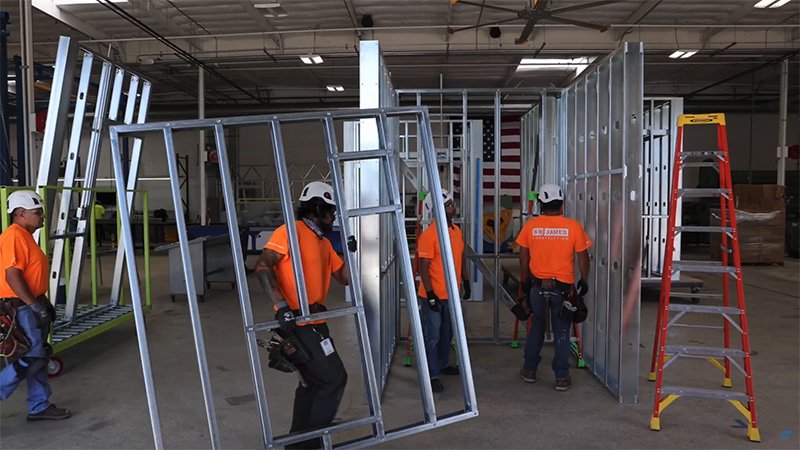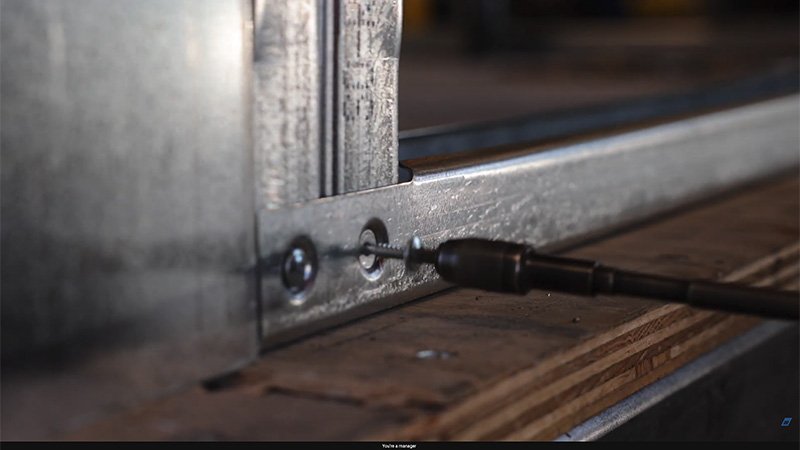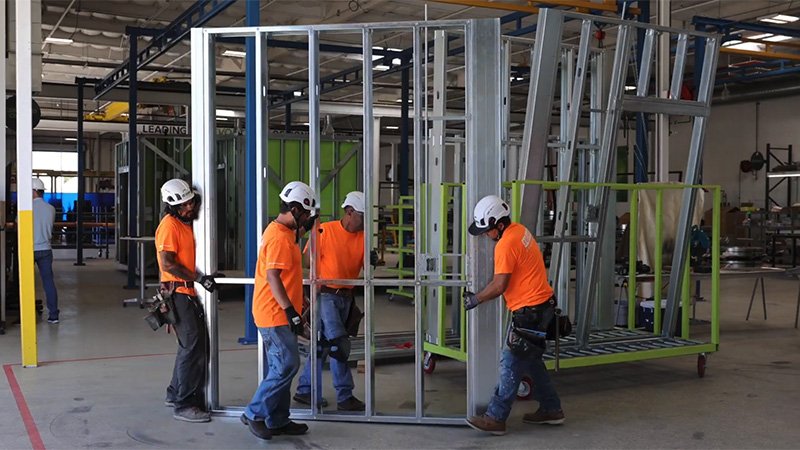Offsite construction proves 14x faster in framing automation test. Read the full story…
⏱️ 5 min read

There is plenty of talk in the construction industry about building smarter. But what does that actually look like and what are the real-world benefits?
Howick’s customer, M3 Components (M3C), is a California-based company revolutionising healthcare construction with offsite manufacturing. They worked with S+B James Construction using the FRAMA™ 7600 to design a technical proof, showing that panelised, offsite roll-formed steel construction saves time, money and trouble.
The team built three small medical exam rooms, each using a different construction method, then timed and recorded each one to assess the differences.
We’re going behind the scenes to give you the full insight into this comparison between traditional stick framing, building from a flat pack and building with panelised walls assembled offsite.
And the best part?
You can watch the technical proof unfold and hear from the experts behind it in the video below.
Here’s the tale of the technical proof, in 5 minutes or less:
-
Roll-formed steel construction explained
-
The results are in: Which method do you think is fastest?
-
The future of construction is panelised and automated
Roll-formed steel construction methods explained
Roll-formed steel (also known as light gauge steel or cold formed steel) framing is coil steel that is shaped to create strong, versatile and light framing components. The steel is passed through a roller, which shapes it into a C or U profile.
In its basic form, roll-formed profiles come in C (stud) and U (track) profiles, no cuts or holes and not cut to length. Many roll-forming machines only produce these.
Roll-formers with framing automation built in (like Howick machines) can produce cut to lengths, pre-cut, pre-punched profiles in the order of assembly.
This framing is superior to timber for most applications because it can significantly reduce construction costs, while providing more consistent quality (not to mention up to 10x less waste). There are a few ways to build using roll-formed steel, with three main options:
1. Stick framing with stud and track
Stick framing is a traditional method most builders use in construction today. Timber is typically used, but roll-formed light gauge steel can also produce great results.
Caleb Rugg, Manufacturing Manager at M3C explains:
“ … You get a stack of studs and track, [you need to] cut everything to length, you build your walls.”

The framers onsite generally need to be highly skilled to get this right and it tends to be more time intensive and messy, as the stud and tracks are measured and cut to length with a chop saw onsite.
2. Framing automation - assembled onsite
With framing automation, builders receive a ‘kit of parts’ ready to be quickly and easily assembled onsite. Smaller, less skilled teams are typically required:
Using this method, stud and track are manufactured as C and U profiles. Each profile is pre-cut to length, including pre-punched web, service, bolt and dimple holes – plus notches and lip cuts.
Most of the onsite work is eliminated, but framers still need to assemble the framing, then stand the framing up to complete the build.
3. Panelised (assembled offsite)
Panelised builds take automation and ease to the next level. The parts are completed using framing automation, then the panels are put together in a factory and shipped to the site:
“Again they’re modeled via virtual construction, the Howick [machine] spits them out, then we build the wall panels here in our manufacturing facility. They’re delivered to site and they stand them up in place,” Caleb explains.

Using this method the panels are already assembled so the time and effort required onsite is minimal, as you’ll see below.
The results are in: Traditional framing took 14x as long!
-
Traditional framing took 7 hours.
-
Kitset - Building using a pre-cut kit-of-parts took 3.5 hours.
-
Panelised - Building with manufactured wall panels took less than 30 minutes.
The results of the technical proof were a surprise for absolutely nobody at M3C, S+B James, or Howick.
Framing automation with Howick steel roll-forming machines was faster and easier than traditional framing by a country mile.
The panelised option was also seven times faster than the kitset!
“Hands down the panelised system was more efficient, much less labour intensive and much safer. Panels that are already roughed in with plumbing, electrical are a huge advantage for projects,” says Josh Walker, General Superintendent at S+B James.
“We’d save at least 15-20% of time on projects after framing goes in … I see this as a huge schedule saver.”
The reason panels were so much faster and easier is obvious. Everything is pre-cut, measured and drilled to millimeter precision - all the team onsite had to do was look at the plans to see where the walls went and how they connected.
The panelised, automated future of construction with Howick
The results from this proof-of-concept test proved categorically that framing automation and panelised parts are significantly faster. More specifically, it proved that building using Howick machines has countless advantages over conventional construction.
Frank Lindsay, Senior VP of Project Development at M3 Components, explains:
“Our approach to prefabricated M-Walls will shorten design schedules and construction durations, reduce our footprint on the job sites, and enhance our quality and safety - all while lowering construction costs.”
Those who worked on the technical proof also explained that there was absolutely no waste when using panelised construction, all they needed to do was grab their tools and move on.
Josh Walker from S+B James says the potential is endless:
“If the future of construction follows this path, we’ll continue to run safer projects, run more efficient projects. And ultimately the client will be the one who benefits from prefabricated panels.”
Find out more about how Howick technology can take your business to the next level
Watch the full video to witness each method of building in action, and see the benefits of automated, panelised construction firsthand.
Download our Machine Buyer Guide – it’s got everything you need to know about transforming your building approach with precision steel roll-forming technology and panelised construction.
If you are ready to reap the transformational benefits of light steel framing automation with Howick technology, talk to us today.